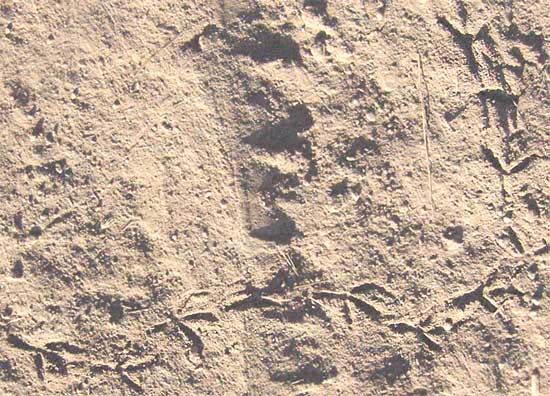Excerpts from Jim Conrad's
Naturalist Newsletter
from the February 4, 2008 Newsletter written in the community of 28 de Junio, in the Central Valley 8 kms west of Pujiltic, elev. ~700m (2300ft), ~N16.331°, ~W92.472°; southeastern Chiapas state, MÉXICO
PIGEON-TOED IN THE DUST

In late afternoon when the sun sinks low enough for it to feel a little cooler but the thermometer still reads 92°F (33.3°C), when Red-winged Blackbirds swarm across already-picked cornfields, rising into dusk's red-tinged air when you get too close, you see Inca Dove tracks wandering across the road's dust, as shown above.
Inca Doves are abundant here, always cooing whur-pu, whur-pu, and more than once when I've passed beneath a low-hanging branch a mother Inca Dove has exploded from her invisible nest so close that she ruffled the wispy fuzz atop my mostly bald head. When Inca Doves flush from the road they flash brightly rusty-red, or rufous, primaries and whirr their wings distinctively. If you don't know what an Inca Dove looks like, imagine a regular Mourning Dove, which is about 11 inches long, reduce its size to some 8.5 inches, square its long tail a bit, stain its primaries rufous, abundantly ornament it with a conspicuous, dark scaling pattern, and you pretty much have an Inca Dove. The scaling effect is so unusual that you may want to search for a picture.
Several species of small, ground-loving doves are referred to as ground-doves, and the Inca Dove is one of them. Closely related Common Ground-Doves are common here, too. They're also scaled, but not on the back, and they have much shorter tails than Inca Doves.
Did you know that the Pigeon/Dove Family is unique among birds in being able to drink by sucking up water? Birds typically fill their beaks, then raise their heads so that the water trickles down their throats.